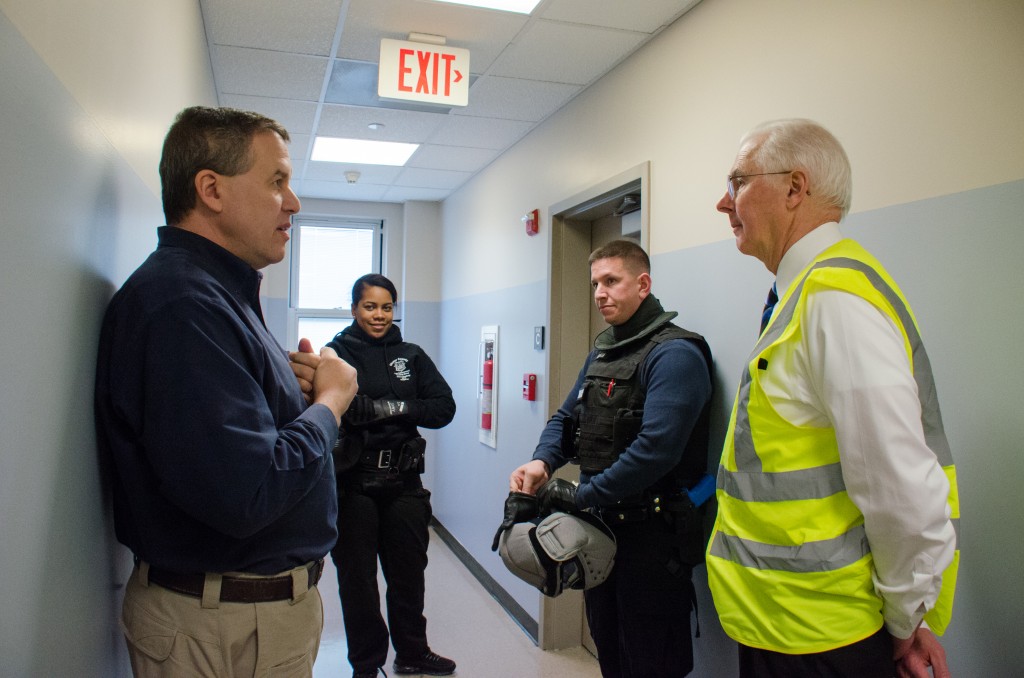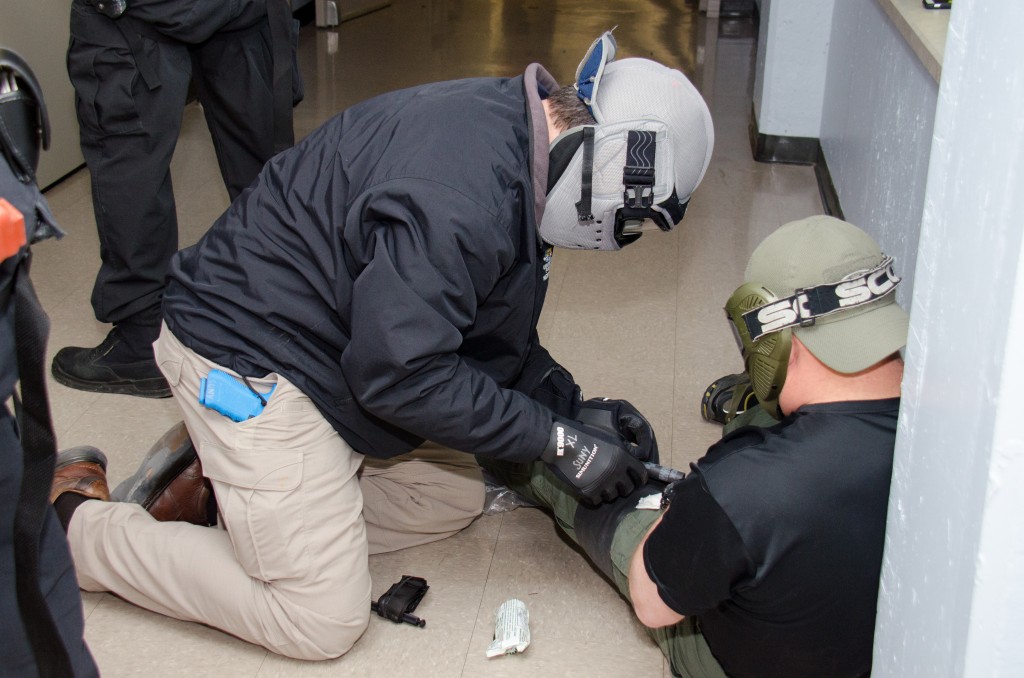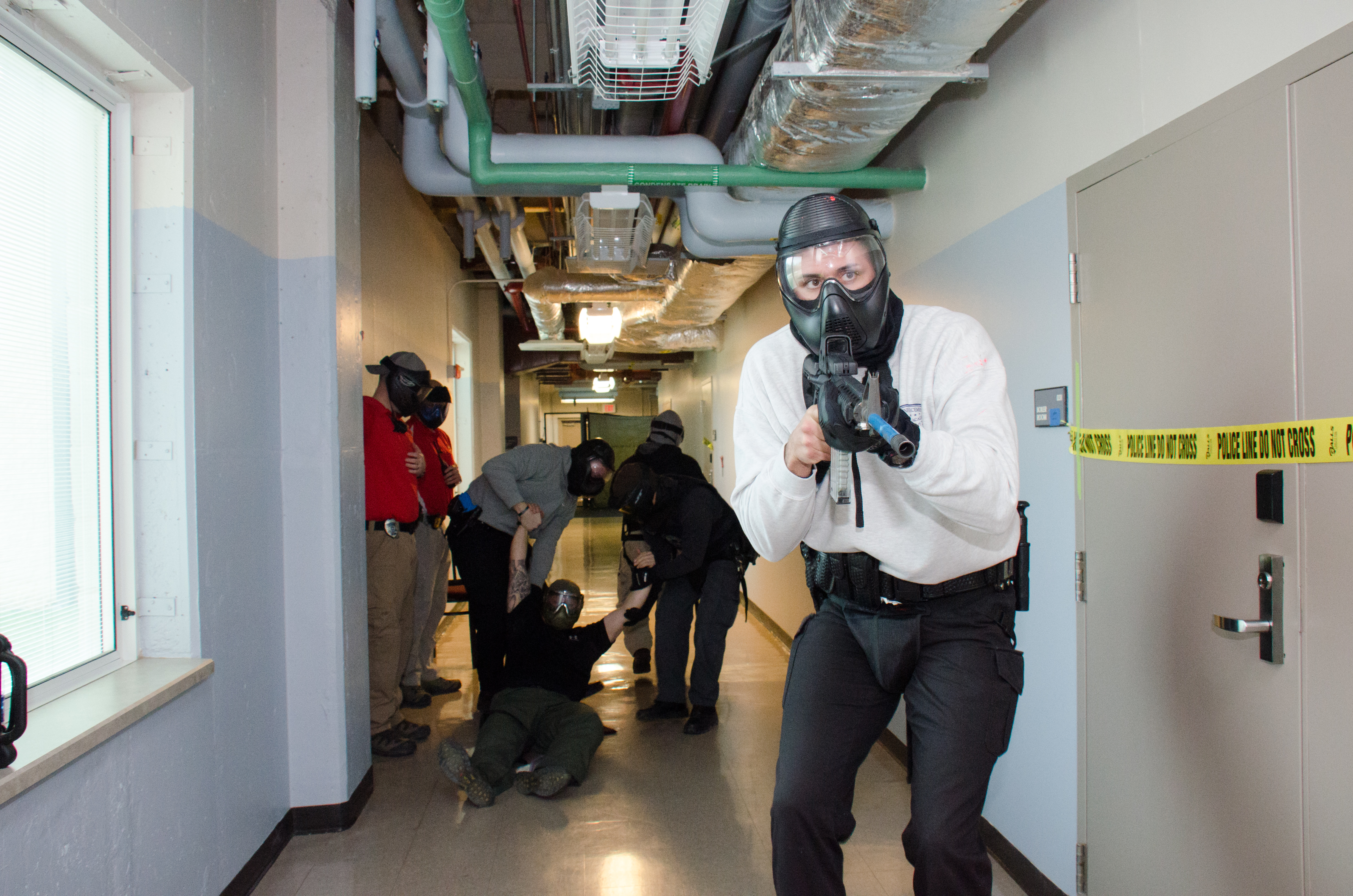UPD sponsors active shooter trainings for local & state officers
 The University Police Department (UPD) hosted regional law enforcement agencies for multiple days of active shooter training on the SUNY New Paltz campus.
The University Police Department (UPD) hosted regional law enforcement agencies for multiple days of active shooter training on the SUNY New Paltz campus.
“We can’t prevent the unspeakable, but we can strive to be as prepared as possible if something like this were to happen here,” said President Donald P. Christian. “For that reason, I’m proud of the educational role that University Police Chief David Dugatkin has assumed at New Paltz to keep his officers sharp and to collaborate with other law enforcement agencies in the region to be ready for such situations.”
The trainings, which were held at Esopus Hall (currently vacant as student residents are away on winter break), allowed officers to simulate a number of distinct active shooter scenarios, and to devise and rehearse effective strategies for protecting the public and neutralizing sources of danger.
“We hold active shooter trainings at least once per year, to keep our officers up on the technical skills and the newest trends in preventing these types of scenarios,” said UPD Chief Dugatkin. “This year we decided to expand our training and invite in a number of surrounding police departments, because in the event there was ever a real armed intruder on this campus, it’s very likely they would be called in to help us.”
In addition to members of the UPD, officers from the New Paltz Police Department, Town of Lloyd Police Department, Rosendale Police Department, Ulster County Sheriff’s Office and New York State Police took part in the training.
“We want to give them an opportunity to see our campus, and more importantly to train with our officers, so they will feel more comfortable and know how to function as a team,” Dugatkin said.
More than 60 officers completed one of the four all-day training sessions, which were offered on Jan. 7, 8, 10 and 11 and included classroom and practical components.
 Esopus Hall was chosen as the site of the trainings not only because it is temporarily vacant, but because it offers a combination of hallways, stairwells, small and large rooms and other architectural characteristics that occur in buildings across campus.
Esopus Hall was chosen as the site of the trainings not only because it is temporarily vacant, but because it offers a combination of hallways, stairwells, small and large rooms and other architectural characteristics that occur in buildings across campus.
Officers were introduced to strategies for entering an active shooter situation working individually and as part of a small team, and both responding officers and the actors portraying shooters used paintball guns with the ability to fire. Other participants played the parts of unarmed bystanders and people who had been wounded, adding layers of reality to the different simulations.
Dugatkin said that a significant part of the value of repeated trainings is in establishing and reinforcing for officers a sense of the best practices for responding to shooter situations, which continue to evolve in response to real-life incidents.
More information about the University Police Department is available online.

